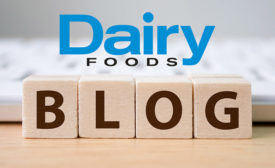Home » Keywords: » protein in beverages
Items Tagged with 'protein in beverages'
ARTICLES
Milk is protein
Powering dairy growth with protein: weight management
By engaging with consumers about how dairy foods and beverages are natural sources of high-quality protein, the industry can leverage current consumer attitudes and health trends for a sizable business opportunity.
October 18, 2013
Milk has it all
Powering dairy growth with protein
Protein has become an important consideration and today’s consumers have taken a renewed interest in the food and beverage products they purchase and consume.
October 16, 2013
Sweeteners for dairy beverages
Americans are trying to add more protein to their diets. One way is with beverages. Selecting the appropriate sweetener for a protein beverage can be challenging.
August 16, 2012
Stay ahead of the curve. Unlock a dose of cutting-edge insights.
Receive our premium content directly to your inbox.
SIGN-UP TODAYCopyright ©2024. All Rights Reserved BNP Media.
Design, CMS, Hosting & Web Development :: ePublishing



